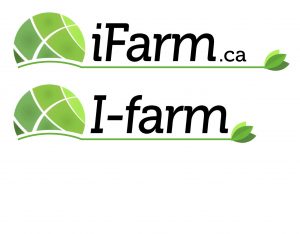For land owners like Anne, the process was slightly different. She already owned the land and needed the zoning changed in order to make the sale of the land profitable. Don’t underestimate the amount of time and effort that’s involved: rezoning from agricultural to residential requires a significant amount of paperwork, including professional assessments, surveys and subdivision architectural plans. It can take many years. “Rezoning land for a subdivision can be very lucrative, but it’s also much more expensive and time consuming,” says Rabinovitch. “Municipalities require professional assessments and sign-off and that takes time and money—so much time and money that you could lose your shirt.”
Read Paydirt: A literal gold mine
Divide and conquer
One strategy that works well in urban areas is to buy a larger piece of land that currently has a single building and then go through the process of severing and rebuilding multiple dwellings on the land. Called “infill housing” by developers, this type of investment is common in cities where the infrastructure and amenities are already in place.
For example, a small 1,500-sq-ft bungalow in Toronto’s working-class West end recently sold for just under $360,000. The buyer went through the process of having the property severed, then tore down the bungalow and built two semi-detached homes, which he then sold. A few months later he walked away with a $160,000 in profit.
“Land severances are a much simpler process than speculating on future development,” says Rabinovitch, “but it still requires a lot of due diligence.”
Before you put in an offer to buy a property, call the municipality building department to see if severances are allowed in that particular residential area. While you’ll almost never get a firm “yes,” you could get a firm “no,” and you can find out what requirements you need to meet if you get a “maybe,” says Rabinovitch.
At this point, you can put in an offer on the property, but make sure to include a condition that will allow to you dig a bit deeper into the zoning and permit requirements before the sale is finalized. “This extra due diligence could cost you a few hundred dollars, but it could also save you a few hundred thousand dollars.”
You should also consider getting pre-approval on your financing. “Keep in mind that as soon as you demolish an existing building you demolish the security collateral for a typical mortgage,” explains Tammie McMullen, a Calgary-based mortgage specialist with ATB Financial. For that reason, most infill developers will seek out a land-value mortgage. “We can provide financing for up to 75% of the land value, but it does depend on where that land is located,” McMullen says.
While there are some significant benefits to infill development—information on zoning and permits is readily available—there are also pitfalls to consider.
First, you’ll be competing with other developers to cash in on the same opportunity. “The price of the land reflects the fact that there’s not a lot of uncertainty in this type of development,” says Rabinovitch. You’ll also need to factor in the price of development. Construction costs will range, but a good ballpark is $150 per square foot—so a 2,000-sq-ft home will cost you $300,000 to build. Plus you’ll need to obtain professional drawings, which cost between 10% to 20% of your total construction costs, and pay for municipal permits.
Develop it yourself
Like infill development, this strategy will see you adding to the value of raw land by building on it and then selling. Real estate investor Sean Ellis recently used this strategy with great success when he paid $80,000 for two acres of raw land near the North Halton Golf and Country Club, in the township of Halton Hills, Ont. There were no buildings on the property, but Ellis (we’ve changed his name to protect his privacy) knew that homes in the area usually sell for at least $800,000, with some of the larger new-builds fetching more than $1.2 million. Even after paying permit, construction and carrying costs—to the tune of approximately $550,000—Ellis easily made a profit of more than half a million dollars.
When considering this type of purchase, land investor Devenyi uses a rule of thumb: the further away from a major metropolis, the smaller the initial capital investment and the longer the timeline for growth. Of course, the opposite is true: the closer you buy property to a major urban centre, the more costly the land, the faster you can turn the property around for a profit. For Devenyi, closer properties require a five- to 10-year investment, while properties further away can take 20 years or more to achieve maximum value.


